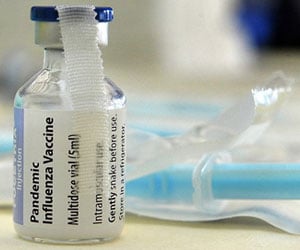Outbreaks of tuberculosis (TB) can be predicted just by observing certain characteristics of the first two patients, says a study report.
The study suggests that if the first two patients are diagnosed within three months of each other, live in urban areas, and if one or both are of sub-Saharan African origin, there is a 56 per cent chance that the two cases will lead to a large outbreak of TB.Published in the American Journal of Respiratory and Critical Care Medicine, the study also suggests that where the patients exhibit none of such characteristics, the odds are just one per cent.
Experts behind these findings claim that theirs is the first study to show that patient characteristics might be used to predict outbreaks, something that in turn might help more efficiently allocate limited public health resources.
“Early identification of clusters that could potentially become large could help focus TB control efforts, especially in low-incidence countries that approach the elimination phase of TB. The aim of our study was therefore to determine which characteristics of the first two cases can predict the development of a large cluster,” wrote lead author of the study, Sandra V. Kik, an epidemiologist at the KNCV Tuberculosis Foundation in The Hague, The Netherlands.
During the study, the researchers analysed data from the Netherlands Tuberculosis Register and the National Institute of Public Health and the Environment from 18,200 patients with reported TB between 1993 and 2004.
Non-culture-confirmed cases, cases that could not be exactly matched between the two databases, and duplicate cases were discounted.
Advertisement
Their analysis unveiled 622 cluster episodes, comprising 1,756 individual cases, 54 of which were large clusters.
Advertisement
Apart from the identification of the initial two cases within three moths of one another, the study also suggests that if the initial two patients were under the age of 35, were of sub-Saharan African origin, or lived in an urban setting, they were also more likely to be a part of a large versus small cluster.
“The main advantage of using patient characteristics as predictors is that these are known shortly after diagnosis and easy to determine as this information is often part of the current registration system,” said Kik.
She agreed that the specific predictive characteristics of the first-two-patient model might vary from country to country.
She, however, insisted that her research methodology could be used to determine such characteristics with the most predictive power whatever the country, and thus have the potential to concentrate limited public health resources in the areas that might have the greatest public health impact.
“This study confirms previous understanding that tuberculosis is a social – as well as infectious disease – that depends for its spread on the nature of human interactions and the social context. What is fascinating is that the authors identified quite early in a cluster outbreak specific social factors that predicted the rapidity and extent of disease transmission, which allows more focused interventions,” say John Heffner, past president of the ATS.
Creative ways to identify the most powerful interventions were essential to fight the global spread of TB.
“If we could also rapidly identify new clusters of TB cases at the population level, we could intervene in time to prevent them from enlarging. We need to be clever and quick to limit further transmission and new cases of M. tuberculosis worldwide,” wrote Dr. Kathryn DeReimer of the University of California at Davis and Dr. Bouke C. de Jong of New York University in an editorial in the same issue of the journal.
Source-ANI
SPH











